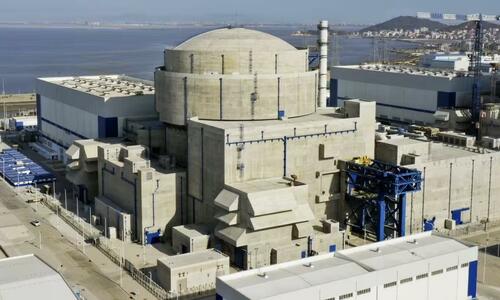China has approved plans to build 10 new nuclear reactors for 200 billion yuan ($27.7 billion), positioning it to surpass the U.S. as the world’s largest nuclear power producer by 2030, according to Nikkei Asia.
The decision, made at a State Council meeting last month, includes eight Hualong One reactors—developed by state-owned firms based on U.S. and French designs—and two CAP1000 units, based on Westinghouse’s AP1000 model. The reactors will add about 12,000 megawatts of capacity.
Construction will take place along the coast in Shandong, Zhejiang, Fujian, Guangdong, and Guangxi, with state-owned companies like China National Nuclear Corp., China General Nuclear Power Group, and China Huaneng Group operating the plants.
China paused new nuclear projects after Japan’s Fukushima disaster in 2011 but resumed approvals in 2019, accelerating to around 10 reactors per year since 2022. President Xi Jinping is promoting nuclear power to reduce air pollution, curb oil dependence—China imports about 70% of its crude—and meet climate goals. In 2020, Xi pledged to peak carbon emissions before 2030 and achieve net-zero by 2060.
Nikkei Asia writes that by the end of 2024, China had 57 reactors generating 59,760 MW, ranking third globally behind the U.S. and France. Capacity is projected to hit 110,000 MW by 2030, making China the global leader if current trends continue. Nuclear power made up 4.7% of China’s energy mix in 2024, with projections reaching 10% by 2040.
While high construction costs have stalled nuclear projects in the U.S. and Europe, China’s state-owned enterprises continue building efficiently, controlling costs and boosting expertise.
Recall, last week Axios reported that The White House is poised to issue executive orders aimed at accelerating the deployment of nuclear reactors across the United States. The White House actions are expected to leverage the Departments of Defense and Energy to expedite reactor deployment, potentially circumventing delays from the Nuclear Regulatory Commission (NRC).
These developments are part of a broader trend toward revitalizing the U.S. nuclear energy sector.
The ADVANCE Act of 2024, signed into law in July, aims to streamline the licensing process for advanced nuclear technologies, reduce regulatory costs, and promote the development of next-generation reactors.
Additionally, in a rare show of bipartisan agreement, the Biden administration had formerly expressed intentions to triple the nation’s nuclear power capacity by 2050, recognizing nuclear energy’s role in achieving carbon-free electricity goals.
The anticipated executive actions reflect a concerted effort to modernize the U.S. energy infrastructure, with nuclear power playing a central role in ensuring energy security and meeting future demands.
As of early 2025, 411 nuclear reactors operated worldwide with a combined 371-gigawatt capacity. Amazon, investing over $1 billion in nuclear projects, is exploring small modular reactors, while Meta and Google are also considering the emerging technology.
As we have continued to report, accelerating power demand growth from AI data centers has sparked a nuclear power revival in the US. For those who missed it, in our note "The Next AI Trade" from April 2024, more than one year ago, we outlined various investment opportunities for powering up America, most of which have dramatically outperformed the market since then.
Loading...
